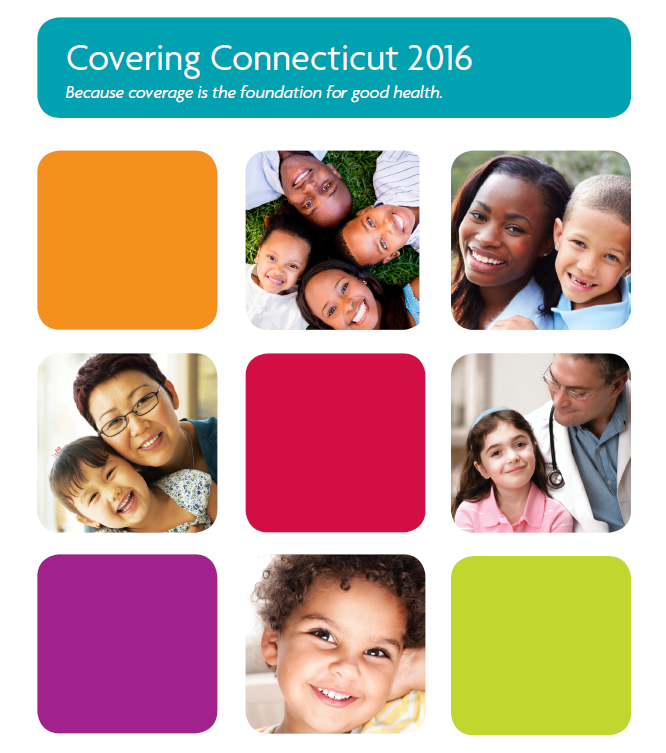Election day is November 8th, 2016 this year. It’s a general election year and 111 of our 151 state House members and 32 of our 36 state Senators face opposition from a major party.
We thought that this was a good time to put together the facts about health coverage in Connecticut and provide information about the Connecticut residents that have been positively affected by statewide efforts to increase access to health insurance coverage since the passing of the Affordable Care Act.
We created a “Covering Connecticut 2016” packet and sent it to all the legislative candidates. We’d now like to share the packet with you. Below is the letter accompanying the packet (if you’d like a PDF version click here).
We encourage you to share with those who would benefit from this information.
COVERING CONNECTICUT 2016
CT Health has recognized the tremendous opportunity for building a better, healthier Connecticut through the landmark reforms written into the Affordable Care Act (ACA). As Connecticut has led the nation in the implementation of health reform, CT Health has partnered to ensure health equity is incorporated into the state’s implementation with several of the state’s key initiatives:
- Funding for Access Health CT to support a mystery shopper to test the adequacy of plan’s networks
- Funding of the state’s cost containment study to ensure expert consultation to meet the legislature’s charge
- Providing policy analysis regarding the benefits of Community Health Workers and funding for the State Innovation Model (SIM) Community Health Worker Advisory Committee
- Funding of the Connecticut Hospital Association to address asthma-related emergency department visits and readmissions by developing models to link community and clinical care — one of the objectives of the SIM
Connecticut has made tremendous strides in advancing coverage with an uninsured rate of 3.8%, and now is focused on transforming the health delivery system through the State Innovation Model. Central to this transformation is the elimination of health inequities. With all the advances seen in Connecticut, it is unacceptable that African Americans are dying at three times the rate of whites, and Latinos are suffering from asthma at significantly higher rates.
Key focus for 2017
The ACA is founded upon the “Triple Aim”: (1) Improved Patient experience, (2) Improved quality and outcomes, and (3) Affordability. In Connecticut, amazing outcomes have been achieved in enrollment and delivery reform. Now Connecticut must take on the issue of affordability.
Despite improvements in health insurance coverage in Connecticut over the past decade, the combination of insurance premiums and point of service out-of-pocket costs makes access to affordable health care difficult for many Connecticut residents. The Connecticut Health Foundation and several other health foundations have funded in partnership with the state a study of best practices in state health care cost containment strategies in order to provide policy options to tackle rising health care costs. These recommendations are due to the legislature at the end of the year.
There is much more to do to ensure health equity for every Connecticut resident, and CT Health is committed to work in partnership to transform healthcare to be more affordable, of higher quality, and more responsive to the people who need it.
In this candidate briefing packet, you will find:
- The organizations CT Health has grant funded. We would be pleased to discuss the health needs and opportunities you see in your community at any time.
- Health access data by town so that you can look up information pertinent to the people of your district.
- Two of the foundation’s health reform policy briefs on the need to integrate Community Health Workers (CHWs) into Connecticut’s policy agenda. To meet the new quality standards, providers must find new, low-cost ways to reach out to patients. Community health workers (CHWs) can help clinicians fill the gap between current practice and new expectations. CHWs can help improve health outcomes and contain costs.
- A CT Health-funded policy brief that considers how the state government might use program waivers (Medicaid section 1115 and Affordable Care Act section 1332) as a policy tool to improve affordability and access for Connecticut residents.
As both a funder and health reform expert, we hope that you will consider CT Health a resource. Please do not hesitate to contact us at 860.724.1580 or pat@cthealth.org.
You can find us online at www.cthealth.org or on Twitter @cthealth.
Sincerely,
Patricia Baker, President & CEO
Gregory B. Butler, Chairman, Board of Directors
